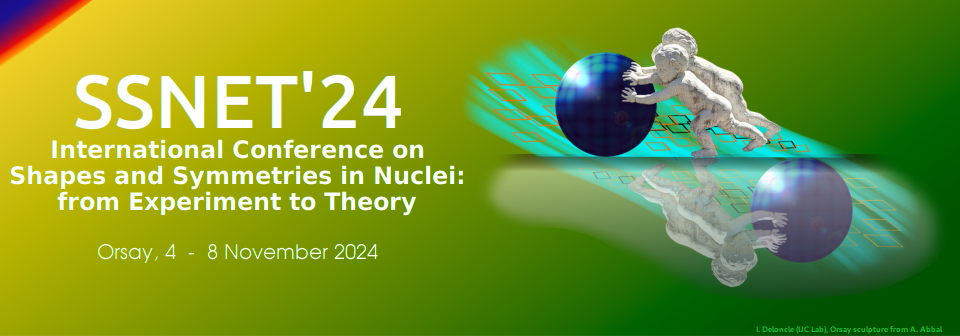Orateur
Description
The nucleus is described as a system of fermions interacting via the exchange of different mesons in covariant density functional theory (CDFT). It is very successful in the description of many nuclear phenomena [1]. However, at present the absolute majority of covariant energy density functionals (CEDFs) are fitted to only spherical nuclei. This does not allow to improve the global description of nuclear phenomena (for example, nuclear masses) and creates some theoretical uncertainties.
To overcome this problem, a new anchor-based optimization method of defining energy density functionals (EDFs) has been proposed by us in [2]. In this approach, the optimization of the parameters of EDFs is carried out for a selected set of spherical anchor nuclei, the physical observables of which are modified by the correction function, which takes into account the global performance of EDFs. It is shown that the use of this approach leads to a substantial improvement in the global description of binding energies for several classes of covariant EDFs. The computational cost of defining a new functional within this approach is drastically lower as compared with the one for the optimization which includes the global experimental data on spherical, transitional, and deformed nuclei in the fitting protocol [2,3].
On-going efforts to further global improvement of CEDFs include taking into account infinite basis corrections in the calculations of nuclear binding energies and accounting spin-orbit contributions to the charge radii in the fitting protocol [4]. Moreover, total electron binding energies are subtracted when defining nuclear binding energies. To achieve that they were calculated for the first time for superheavy elements. The consequences of recent developments of CEDFs on the predictions of nuclear shapes across the nuclear chart will be discussed.
This material is based upon work supported by the U.S. Department of Energy, Office of Science, Office of Nuclear Physics under Award No. DE-SC0013037.
[1] D. Vretenar, A. V. Afanasjev, G. A. Lalazissis, and P. Ring, Phys. Rep. 409, 101 (2005).
[2] A. Taninah and A.V.Afanasjev, Phys. Rev. C 107, L041301 (2023).
[3] A. Taninah, B. Osier, A.V. Afanasjev, U.C. Perera and S. Teeti, Phys. Rev. C 109, 024321 (2024)
[4] B. Osei, A. V. Afanasjev, A. Taninah, U. C. Perera, V. A. Dzuba, and V. V. Flambaum, in preparation, to be submitted to Phys. Rev. C

